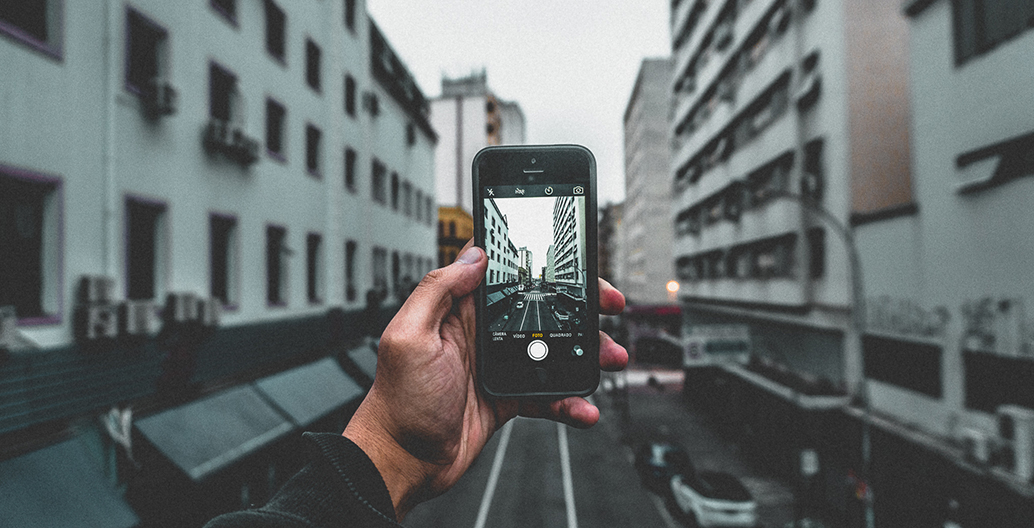
Are we there yet? Part two: The hitchhiker’s guide to smart mobility
In the second in this two-part series leading up to Streets 2.0, Foreground examines how a simple smartphone can allow even an old banger to be part of the smart mobility revolution.
[This is the second part of our two-part feature on smart mobility. For the first part, click here]
Smart mobility is not a one-trick pony and it is certainly about more than kicking back and watching Netflix on the drive to work. That may be what gets the auto industry out of bed, but from the perspective of government and public investment, smart mobility should be less about private autonomous cars, and more about transport equity, alleviating congestion, improving transport efficiencies and rethinking the street.
Consider a recent American example, in the Rust Belt city of Columbus, Ohio. Its Smart City Program won a federal smart city competition, receiving a US$40 million grant from the US Department of Transport. It proposed five key initiatives: a real-time traffic tracking app, an app to improve freight logistics, mobility assistance to help cash-based and/or credit-challenged citizens use transit services like Uber, a smart grid to support greater electric vehicles, and finally “an autonomous vehicle pilot deployment to provide last mile connectivity” for low income workers who live in suburbs that don’t have a train service. Most of those innovations are about information sharing. The one component of the Smart City Plan proposing the use of autonomous vehicles could arguably be considered a band-aid for the systemic failure of suburban sprawl and its inherent challenge to public transport.
Columbus is just one of dozens of smart city programs around the world where autonomous vehicles are patched into a larger narrative of making cities better. In these programs, the focus is less on radars and infrared, than on more accessible technologies that allow us to transition from private car dependence to on-demand, shared services. To the extent that autonomous vehicles have a value, it is about plugging holes in larger public transport networks. Much like in-fill housing could never be the main game to a national housing strategy, it will be a long, long time, if ever, before autonomous public transport becomes the main game for a city’s public transport service.
Looking locally, in Australia much has been made of South Perth’s Australia-first deployment of an autonomous minibus, which accommodates up to 11 passengers. It was launched hot-on-the-heels of a similar trial service rolled out in Helsinki and in Lausanne. While these minibuses were celebrated as leading the charge in autonomous transport, it is important to clarify that they are not in fact free-range autonomous vehicles. Perth’s Intellibus has been “taught” a fixed route, in highly controlled, almost test-lab conditions, along South Perth Esplanade between the Old Mill and Sir James Mitchell Park. It crawls at the speed of a fast walk and is entirely passive. If it encounters a double-parked car, it stops, and waits.
There might be a future for these little golf caddies in the more highly regulated, campus-like urban environments of developed nations, but don’t go thinking this is a paradigm shift. This is a boutique, highly specialised solution that has limited capacity to co-exist with the messy, lo-fi, and pedestrian congested world that constitutes most cities.
Buddy, can you spare $14 billion dollars
By contrast to the tech industry’s fascination with autonomous technology, with all its state-of-the-art hardware and split-second data crunching, the beauty of the current mass adoption of smartphone enabled car-sharing, from Uber’s owner-driver taxis to Blablacar’s city-to-city car-shares, is not their futuristic complexity, but their almost banal simplicity.
As Blablacar CEO Frédéric Mazzella says, “it costs €6000 a year to run a car in France, and there are 38 million cars, meaning €200bn is spent, amounting to 10% of GDP. Yet, 96% of the time the cars are parked and not moving”. It’s a dumb set of figures, which is why his smart company went from 10 million to 20 million new members in one year, simply by helping people to connect and share a city-to-city ride. Even a little old Citroen 2CV can be part of the revolution, by just picking up a stranger in Paris and dropping him/her off at Bordeaux. And now Uber’s jumped on board with Uberpool.
Again, the beauty of car-sharing and car-pooling isn’t about making millions of tonnes of new stuff. It’s beauty is precisely the opposite: taking the stuff we have, and making smarter use of it. A simpler definition of sustainability is hard to find.
Deloitte Access Economics released a report earlier this year, on the impact of all this in Australia. It suggests that “if taxi and ridesharing services were to decrease the number of motor vehicles owned in Australia by 10 percent, or by 1.8 million mid-sized cars, families would save approximately $14.4 billion, based on a cost of $8000 per car, per year”. This is good news for families, but also for roads that might see a reduction of nearly two million cars.
When considering what this means for the city, it’s hard to tell if government policy is simply asleep at the wheel, or just deciding, in true Machiavellian style, what’s politically important. Why else would government budgets continue to allocate billions of dollars for the growth of road networks, while global research into peak car in the developed world shows time-spent in car journeys per capita declining since as long ago as 2004?
Locally in Australia, fresh research and innovative policy thinking on changing car usage is more likely to come out of local government in our capital cities than federal government. Town hall is desperate to understand what all this will mean for their future planning, and in particular, their future parking and infringement revenues. Research consistently shows that things are indeed likely to change sooner than we thought. Yet if true, what place does design play in all this?
The vision thing
Where are our visionary urban designers in this unfolding urban drama? Who is trying to understand what all this means at street level? Neither Perth’s autonomous little bugs nor a privileged revolution in private car ownership suggests any urban design solutions for relieving congestion, as our population is expected to expand consistently over the next century.
Sidewalk Labs, a spinoff from Google, is trying to bridge the gap between urban design and urban growth, providing city governments with knowledge of how cities currently work, and why. Its CEO Dan Doctoroff thinks that the gulf between the technologists on the one hand and the urbanists on the other is because “urbanists and the planners don’t really understand technology, and the technologists don’t really understand cities”. In this impasse, “tactical urbanism” and “urban acupuncture” have promoted pop-up interventions that seek to reclaim the city from the car, while reinventing the street.
A good example is the Park(ing) Day initiative, where many cities set aside parking spaces for those who want to throw down some astro-turf, drag out an armchair and invent an instant park. Arup has been engaging in Park(ing) Day for several years now in Sydney.
It’s a start, but it’s baby-steps, while the car industry is taking giant strides.
As fun as pop-up provocations are, and as forwarding-thinking as other ad hoc innovations such as electronic vehicle (EV) recharge spots may be, they are not enough. We need to rethink our planning and policy direction, and we need designers in the room. If autonomous vehicles have the potential to be part of the solution, instead of more of the problem, we need to get serious about car usage forecasting, and more than likely get some regulation in place fast. But you might not want to hold your breath – it doesn’t take an urban historian to review our past efforts at regulating car traffic in favour of the pedestrian to be less than optimistic of our chances.
Beyond regulation, again, we urgently need design to be part of this conversation. Consider the future of parking as an obvious example. Autonomous cars could mean dropping passengers off at the front door, before proceeding to park autonomously. This in turn could mean that above ground carparks could fit twice as many cars in the same space, housed in precisely measured two-metre-by-two-metre slots. Or better, carparks could be half the size. At the very least, all new carparks should be built to be adaptable to the reduced storage spaces required for autonomous cars. Thinking positively, a shared mobility revolution could mean a significantly lower demand for parking stations. Ergo, we need parking stations that can be easily adapted to office or residential use. Such approaches are slowly making their way into planning codes, but too slowly.
If we widen our lens to consider urban design impacts more broadly, autonomous cars could mean smaller-scale delivery and waste service trucks: carrying less, more often. This could double the size of pavements and half the size of roads in our city centres. In fact, imagine banishing all large vehicles from every city centre in Australia and New Zealand, with only a busy network of thousands of small autonomous vehicles regulated to travel no faster than 10 kilometres per hour. With the right vehicle-to-pedestrian protocols in place we could beckon in a new era of civic place-making. Call it Monderman 2.0, after Hans Monderman who invented Shared Space. That would be a true mobility revolution.
Currently, however, the street and how it performs is not part of the autonomous car picture, literally. Drop “smart cities” into Google images, and you get a wall of Hong Kong-like skyline renders and illustrations, with diagrams and flow charts. The future, it seems, is built of SimCity modules, regulated by sensors and driven by data. To date, what all this means for the street, the ground game, the pedestrian experience, is anyone’s guess. It’s time we seized the initiative from the car manufacturers, software giants, big data servers and telcos, and started making a case for what this could mean, not for quarterly returns, but for the public life of the city.
Foreground is a media partner with Streets 2.0, where smart mobility will be part of a discussion on the future of the street.
Click here for more details.


